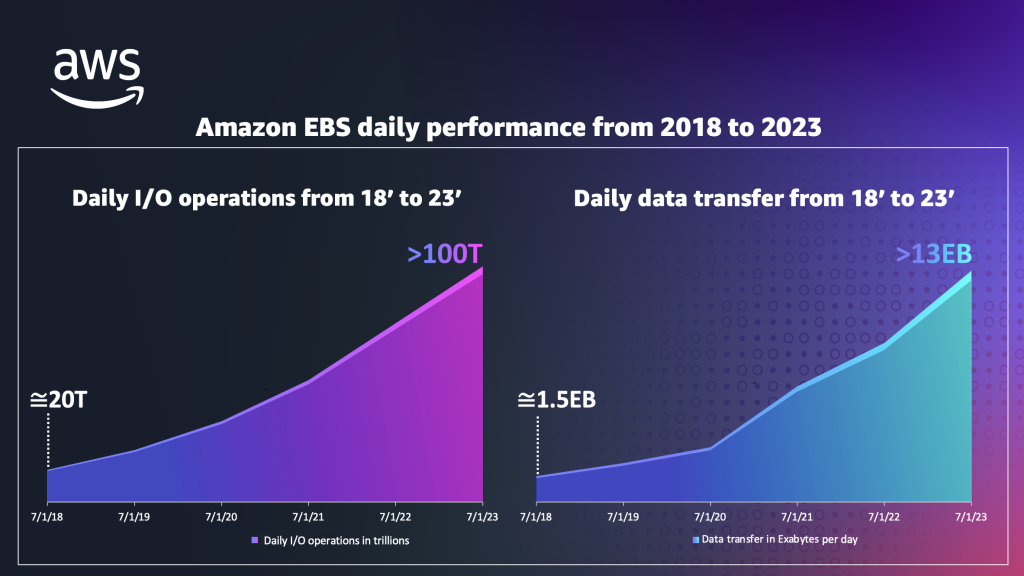
Just after joining Amazon Web Services in 2009, I met with Andrew Certain, at that time a senior engineer on the Amazon Elastic Block Store (Amazon EBS) team, to get into the details on how EBS was implemented and what plans were looking forward. Andrew took me through the details of this remote block storage solution and two things were immediately clear to me: 1) there was work yet to be done to address the most demanding workloads, and 2) the overall opportunity for EBS was massive. Having been around the database world for decades, I know just how important high-performance block storage is to customers. There was and still is a real customer need for EBS.
As confident as I was that EBS was going to be a very important service for AWS customers, I wildly underestimated what the team would deliver over subsequent years and how many customers would come to trust EBS with their most mission critical features.

As I write this today, it’s been exactly 15 years since Amazon Elastic Block Store was announced August 20th 2008. In thinking about what’s been accomplished over the last 15 years, I asked the team for some data points on EBS scale, usage, and adoption and I was blown away by the magnitude of some of these metrics. EBS has really grown up.
I’ve been involved with EBS for the entire period so these data points should not be much of a surprise to me but most of our internal engineering discussions focus on new features, how existing features are performing, or changes and updates we want to make. We just don’t spend much time looking at service-wide aggregate I/O rates or the number of EBS volumes customers are creating.
I asked the EBS team to quantify customer usage in 2023, the 15th year of EBS. Focusing first on daily usage, EBS delivers more than 100 trillion input/output operations per day. When I started working on database engines back 30 years ago, hosting 100 trillion I/O operations per day would have required more than 11 million disk drives. These I/O rates are truly staggering.
Perhaps even more staggering is the fact that EBS transfers more than 13 exabytes of data for customers every day. We toss around exabytes everyday and it starts to sound normal but each exabyte is a million terabytes. Years back I saw an interesting data point in the NYTimes that adds another nice scaling point. That article estimated that 5 exabytes is the equivalent of all words ever spoken by humans since the dawn of time. That is a remarkably large amount of data.
Continuing to focus on daily usage, millions of customers use EBS daily, and these millions of customers create more than 390 million EBS storage volumes each day.
In celebrating these 15 years of EBS, I wanted to thank you for putting some of your most business critical and performance sensitive workloads on EBS. Your trust in EBS has helped make EBS a very large service and we all know that we need to continue to earn that trust every day. The focus on engineering care runs strong on the EBS team.
We’ve done a lot over the last 15 years but there is lots more coming. It’s always exciting to see what customers are doing with EBS and many of the features and updates we have made over the years came directly from customers. We continue to have big plans for EBS and you can look forward to continuing performance improvements, advanced features, and the same engineering care that keeps EBS off your worry list.
Wow